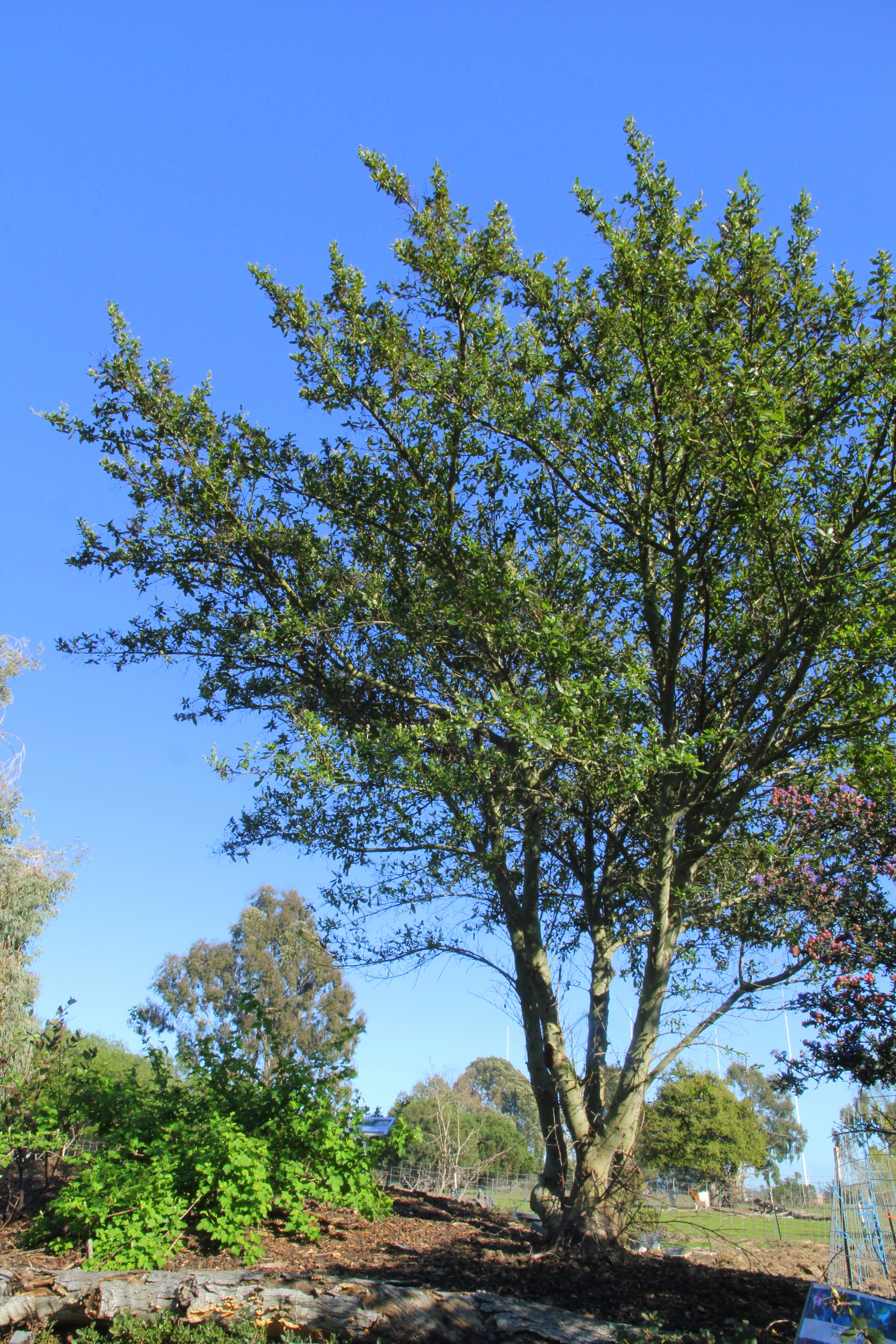Ceanothus thyrsiflorus
Blue Blossom Ceanothus
Common in moist, shaded regions of the mountains, sometimes forming pure forests with shrubs up to 20 feet high. In garden situations shrubs typically reach 10 to 15 feet and make a beautiful small shade tree with fragrant light blue blossoms. Give it moderate water and plant it in full sun to part shade.
Wildlife value: Ceanothus are hosts to a number of butterflies, including the Pipevine Swallowtail, Brown Elfin, Hedgerow Hairstreak, and Echo Blue. Their abundant flowers draw many insects. Ceanothus leaf litter supports plenty of invertebrates which, in turn, feed birds and lizards. The foliage provides excellent cover. The larger-leaved species are good forage for deer. Quail eat the small, hard seeds, and a number of mammals both large and small browse the twigs and foliage.
Additional notes about Ceanothus: Many Ceanothus are prone to disease in summer-wet soils, so little watering is recommended after the plants are established. Tip-pruning will keep plants compact. Small, wrinkled, or spiny-leaved forms are usually unattractive to deer. Ceanothus roots fix nitrogen in the soil. These plants will suffer if their roots are handled. Do not pry or prune the roots.

